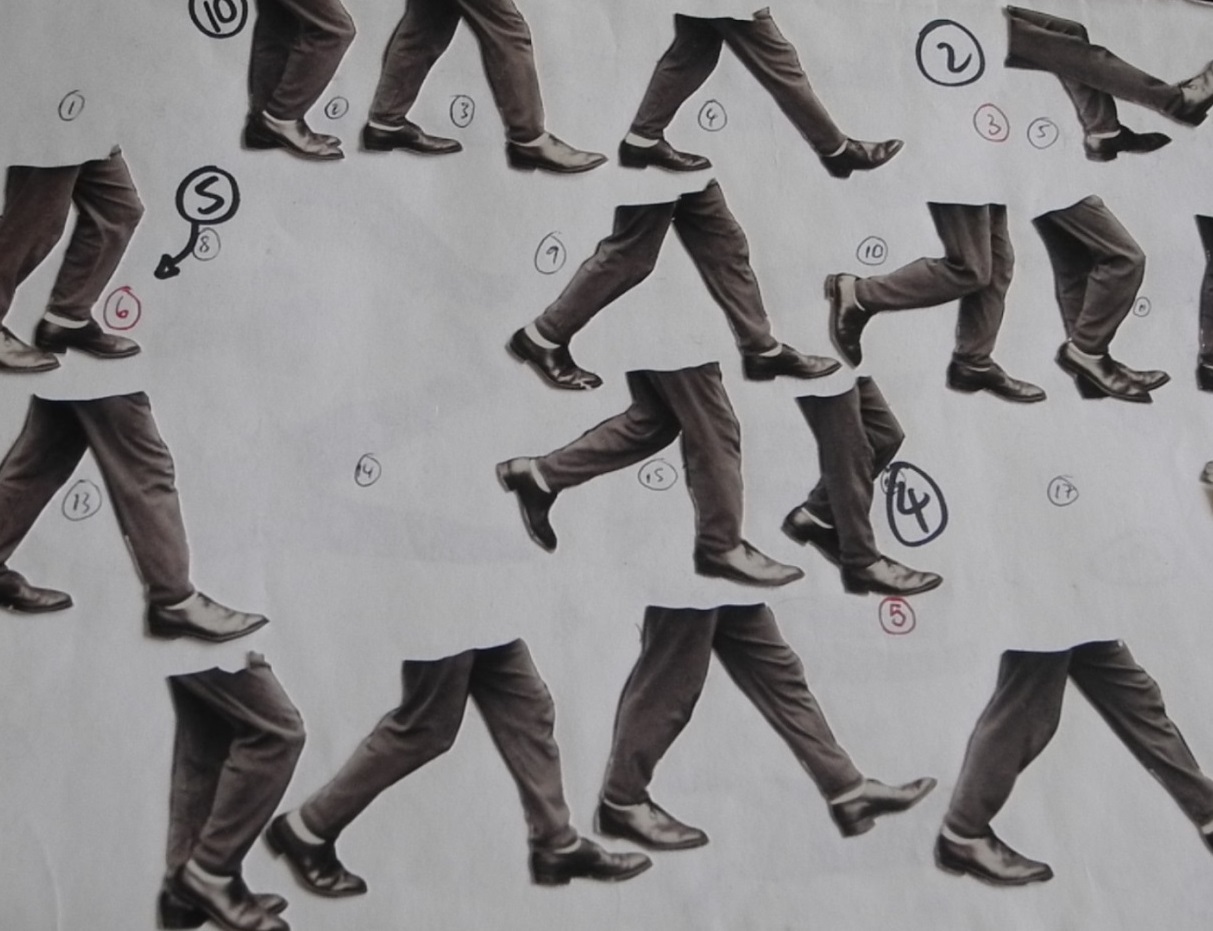
Wrake’s surreal landscapes, looping geometric patterns and psychedelic collaging typify his unique body of work. This collection, gifted to the National Science and Media Museum in 2014, is significant as it not only records Wrake’s singular vision but also suggests the possibilities of experimental animation.
https://www.youtube.com/watch?v=fw3XyOyl47Q
Run Wrake is perhaps best known for his multi-award-winning independent short film Rabbit (2005, above) in which he used 1950s spelling cards to inspire a dark moral drama that comments on human greed. The Run Wrake Archive holds designs and CDs relating to Rabbit as well as Wrake’s other independent film Jukebox (1994) in which he develops his character “Meat head”, a man whose head transforms into a raw sirloin steak, narrowly escaping the razor-sharp bite of a hungry street dog.
A significant aspect of the materials on Jukebox are developmental story-boards and correspondence regarding Wrake’s creative process which give us a rare insight into Wrake’s animation style. In his notes he writes that his central character in Jukebox “will be made up from 3 heads (2 human, 1 Roman sculpture)”. This is part of his “technique of photocopymontage” which involves “the taking of hundreds of B&W photographs which can then be manipulated on the photocopier, coloured with watered ink and stuck down”.

Another significant portion of the Run Wrake Archive is linked to his work within the music industry which began when his graduation film Anyway (1990) won Best Animation at the BP Expo International Student Film Festival in London. Anyway went on to be shown on MTV’s animation showcase Liquid Television which landed Wrake his first music video for the post-punk band Gang of Four’s single ‘Cadillac’. MTV also commissioned Wrake to work on their European channel “M2” launch film M2 Director’s Cut (1998) and their M also stands for ident (1996). The many designs for this alliterative project in the Run Wrake Archive include images of unfurling moths, scenes of Minis and melons and, as Wrake’s notes describe, a “mask-wearing monk with measles mumbling”.

Wrake’s working process for developing animation can also be seen in his drawings in the archive, for example, for the music video he created for Howie B’s Music for Babies (1996, below). One page has numbered acorns drawn from various angles, used to create the movement of the acorn across the screen in the video. Music for Babies is typical of much of Wrake’s earlier work in which he collages together vignettes, just as these are collaged from various cut outs and sketches, to create a synchronised whole. This is in contrast to Wrake’s later films like Rabbit which show a move towards a narrative structure. Through the archive we can see these conceptual developments over the course of his career.
The Run Wrake archive not only reveals Wrake’s working practices and developmental processes but provides an insight into Wrake’s lesser accessible works such as his work with advertising companies like Coca-Cola. One box in the archive is dedicated to the commercial he made for Coca-Cola in 1998 entitled Falling in which a window-washer falls from the side of a skyscraper and lands in a psychedelic pool of jumping fish, reclining on a lilo with the iconic red Coca-Cola can in hand. The cels in this box reveal the storyline of the video, which is not available online, and in effect enable us to “watch” the action unfold over the course of the animation cels.
Wrake’s style, which blends cool 90s graphics with pop art aesthetics and, at times, a dark wit, prompts us to take a second look at the everyday images that surround us. His works are as reflective as they are surreal and are important for thinking about how we make sense of an increasingly image-saturated reality.
The Run Wrake Archive is available to view by appointment during our research weeks. Please contact research@scienceandmediamuseum.org.uk for further information.
Watch more of Run Wrake’s animation on his website.